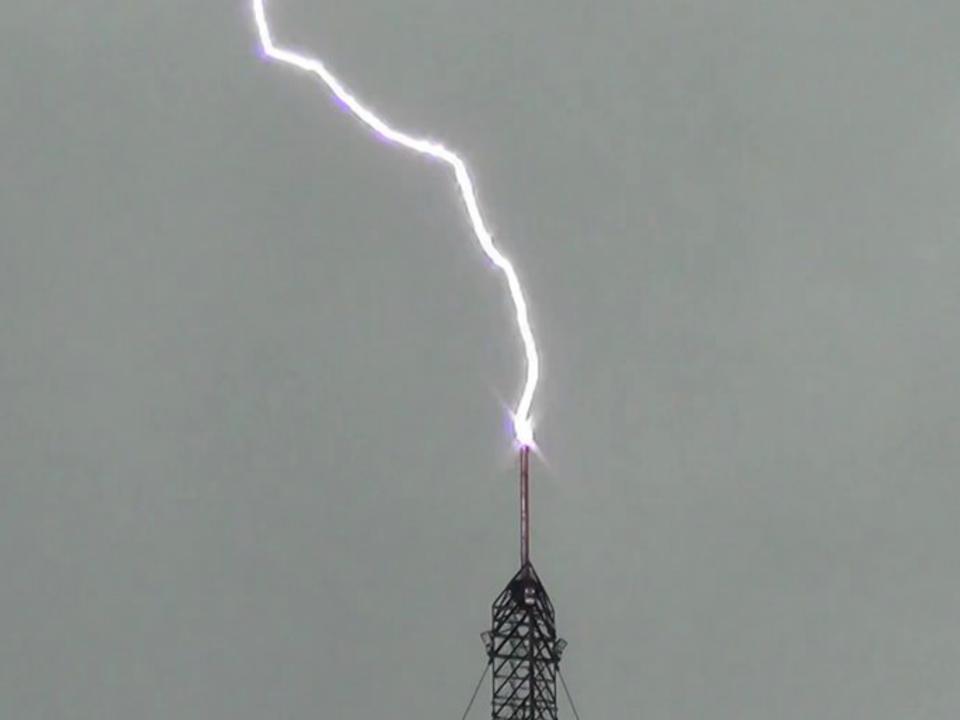
|
What causes lightning?
|
Lightning is produced in thunderstorms
when liquid and ice particles above
the freezing level collide, and build up large electrical fields in the clouds. Once these
electric fields become large enough, a giant "spark" occurs between them (or between them and the ground) like static
electricity, reducing the charge separation. The lightning spark can occur between clouds,
between the cloud and air, or between the cloud and ground.
As seen in the photo above, cloud-to-ground
lightning usually occurs near the boundary between the updraft region (where the darkest) clouds
are, and the downdraft/raining region (with the lighter, fuzzy appearance). Sometimes, however, the
lightning bolt can come out of the side of the storm, and strike a location miles away, seemingly
coming out of the clear blue sky.
As long as a thunderstorm
continues to produce lightning, you know that the storm still has active updrafts and is still
producing precipitation. The temperature inside a lightning bolt can reach 50,000 degrees F,
hotter than the surface of the sun. Objects that are struck by lightning can catch on fire,
but since the flash is so brief, objects can also show little or no evidence of burning at all.
|
|
(page last updated 12/15/2019)
|



